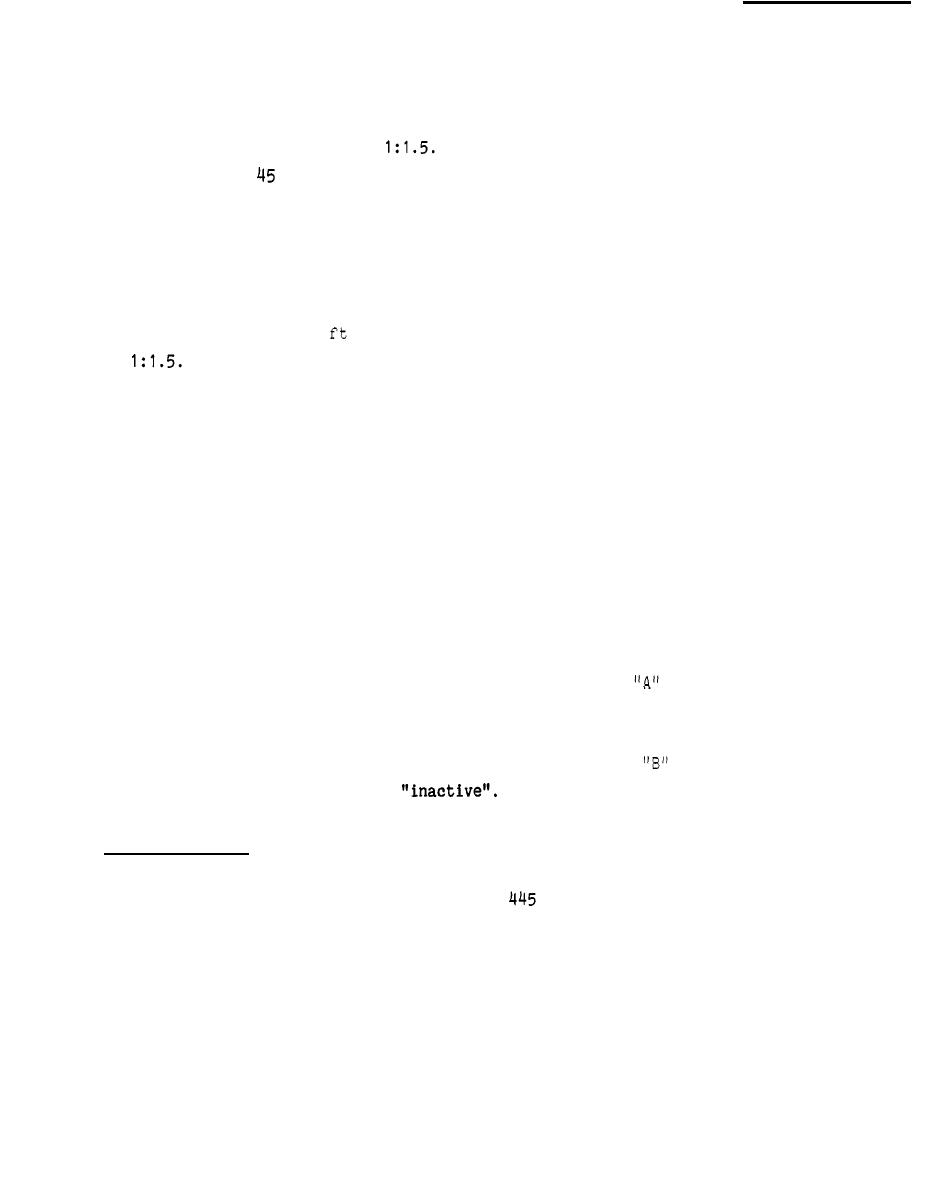
jetty as completed in 1913, and it has proven effective. The width of the
south jetty crest varies from 45 to 70 ft, with a crest elevation of
+26 ft mllw and side slopes of
The jetty is constructed of stones up
to 25 tons each,
percent having an average weight of 10 tons each. The
base width of the outer portion is approximately 350 ft, and the total height
.
ranges up to 76 ft
69. The design wave on the south jetty is the depth-limited breaking
wave and varies from 19 to 22 ft.
70.
The north jetty was constructed between 1913 and 1917. The crest
elevation was +28 to +32
mllw, with a crest width of 25 ft and side slopes
of
The jetty started on the west side of Cape Disappointment, extended
southwestward for about 2 miles to a point 2 miles north of the south jetty,
then turned westward for about 1,700 ft. The jetty contained nearly 3 mil-
lion tons of stone.
71. The outer portion of the north jetty was flattened by wave action
to mean low water by 1930, but the 2-miles-long southwesterly leg was backed
up by a natural sand fill on the northerly side and was thus protected. Some
damage resulted along the southeasterly side from river undercutting, The
jetty was rehabilitated during 1938 to 1939 and a concrete terminal placed at
the end of the southwestward segment. The outer portion extending westerly
was not reconstructed and serves as an apron on the sea slope.
72. In conjunction with the rehabilitation of the north jetty, two spur
jetties were proposed to help maintain the channel. Jetty
started at Cape
Disappointment and extended in a southerly direction for about 1 mile. The
jetty has experienced frequent problems with scour at the head of the jetty,
and most repair work has been a result of the scour. Jetty
was not con-
A chronology of events related
structed and has been classified
Coos Bay, Oregon
73. Coos Bay is located on the southern Oregon coast about 200 miles
south of the mouth of the Columbia River and
miles north of San Francisco
Bay. The project includes two jetties at the mouth of the bay and a small-
boat mooring basin at the Town of Charleston, about 1 mile from the mouth of
the bay.
74. The initial study for navigation improvements, authorized in 1878,
recommended that two parallel jetties be constructed seaward from the mouth of
25



 Previous Page
Previous Page
